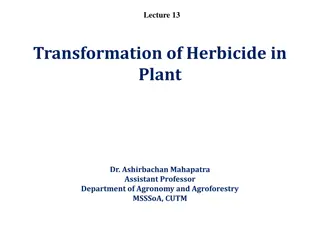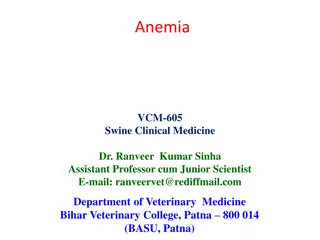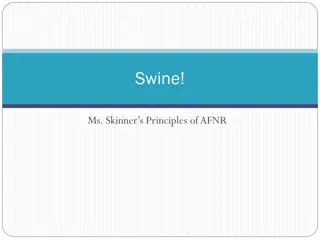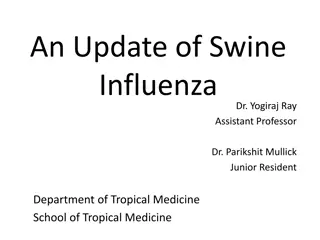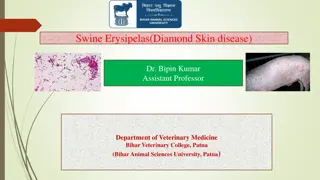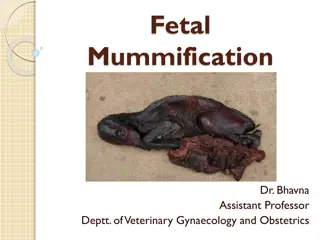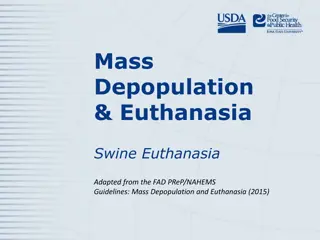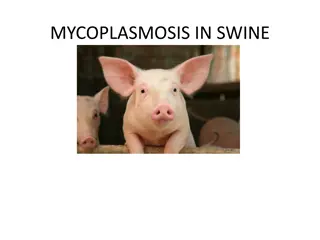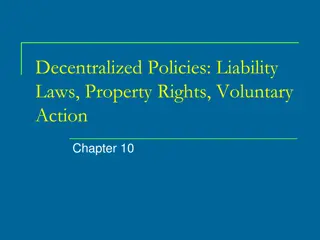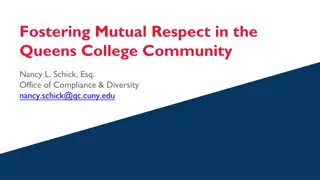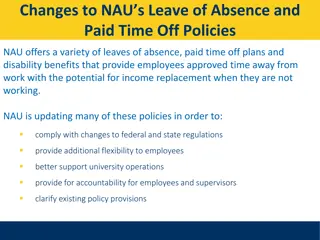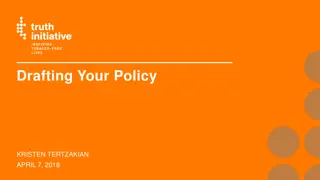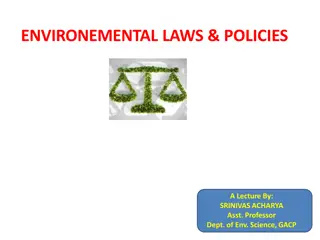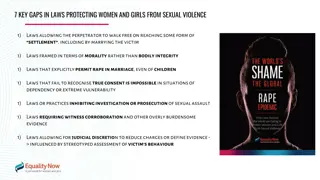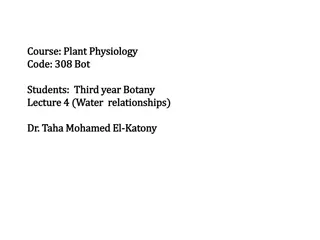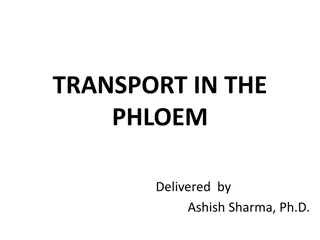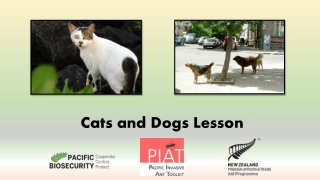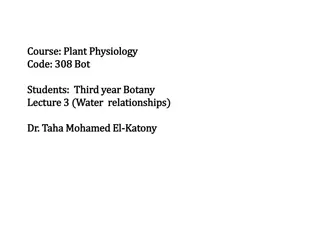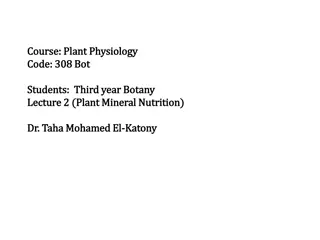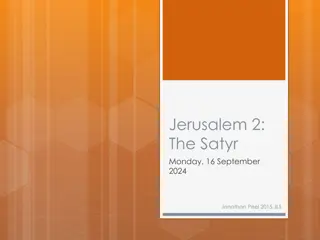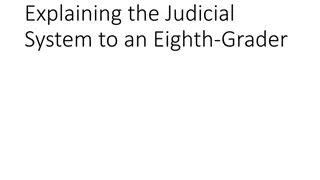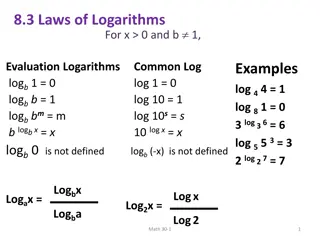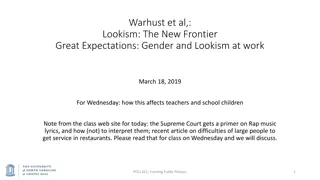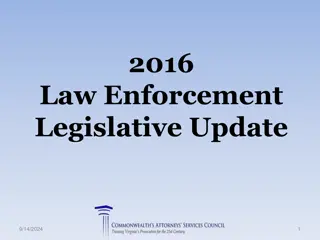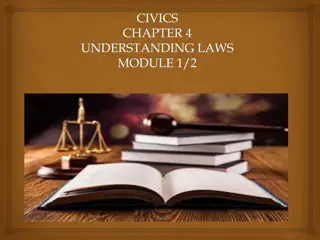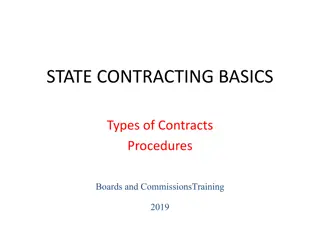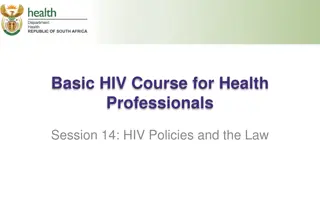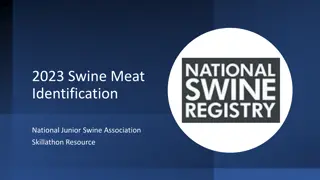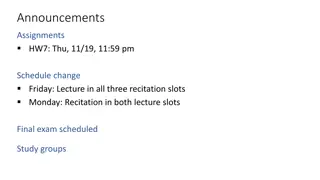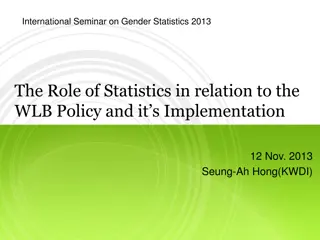Comprehensive Analysis of Policies and Laws on Feral Swine Translocation
Research and analysis conducted to assess the statutes, regulations, and policies relating to the translocation of live feral swine across all 50 U.S. states. The study aimed to enhance uniformity and effectiveness by providing recommendations based on state wildlife agency responses, surveys, and legal definitions of feral swine.
Download Presentation

Please find below an Image/Link to download the presentation.
The content on the website is provided AS IS for your information and personal use only. It may not be sold, licensed, or shared on other websites without obtaining consent from the author. Download presentation by click this link. If you encounter any issues during the download, it is possible that the publisher has removed the file from their server.
E N D
Presentation Transcript
Research and Analysis of Policy and Law to Prevent Translocation of Live Feral Swine March 21, 2023 Multistate Conservation Grant Program (F22AP00690-00) USDA APHIS Federal Award AP22WSHQ0000C006 William E Moritz and Lou Cornicelli Wildlife Management Institute in partnership with Southwick Associates Presented at Feral Swine Working Group Committee Meeting
Objective Determine the current states of statutes, regulations, and policies on the translocation and movement of feral swine for fifty (50) state wildlife agencies and provide recommendations that increase uniformity and effectiveness.
Methods 1) literature review 2) survey of a) State natural resource agency point person for feral swine in all 50 states; b) State Veterinarian for all 50 states. 3) systematic search of administrative code and regulations for all 50 states.
Results Completed surveys received from 78 of 97 individuals (80.4%) At least one response from 47 of the 50 states surveyed.
Distribution of Feral Swine Definition: feral swine included escaped domestic swine, Russian or Eurasian wild boar, Russian boar hybrids, or escaped pot-bellied pigs. Respondents indicated the presence of feral swine in 31 states, consistent with USDA APHIS, who reported 31 states with feral swine in 2021. Many states reported more than one category of feral swine. 19 states reported feral Russian boar or Russian boar hybrids. 17 states reported the presence of feral pot-bellied pigs.
Legal Definitions of Feral Swine Wide range of definitions found in statute. All definitions in report. Most thorough definition (Washington Admin Code 16-80-005): Feral swine means animals included in any of the following categories: Animals of the genus Sus that are free roaming on public or private lands and do not appear to be domesticated; Swine from domesticated stocks that have escaped or been released or born into the wild state; European wild hogs and their hybrid forms (also known as European wild boars or razorbacks), regardless of whether they are free roaming or kept in confinement; or Animals of the family Tayassuidae such as peccaries and javelinas, regardless of whether they are free roaming or kept in confinement.
Importation of feral swine Definition: to provide entry of an animal into a state or to bring an animal into a state Feral swine may or may not be part of importation rules for swine in agriculture. 44 states prohibit importation of feral swine although 27 of these states have exceptions to the prohibition. See Smith (2020) about the importance of distinction of restrictive transport policies and prohibitive transport policies.
Transportation of feral swine Many states have enacted relatively prohibitive regulations to prevent spread of domestic swine diseases. Human-mediated activities has been attributed as a primary catalyst for accelerated range expansion. 33 states have generally prohibited transportation without a permit and usually a CVI. 13 states prohibit transportation within their borders and have no exceptions.
Release of feral swine No states allows feral swine transported within or into a state to be released into a setting where the animal is essentially at large. 32 states prohibit release of feral swine under any conditions. 18 states allow release into certified facilities with permit
Hunting Feral swine 6 states classify feral swine as a game animal. Seasons, methods of take , license requirements, and whether take is even legal vary significantly by state. Bag limits are nearly universally unlimited. Most states require some sort of hunting license before feral swine can be taken.
Disease Testing Feral swine are known to carry at least 30 diseases and almost 40 different parasites that impact humans, livestock, and wildlife. Feral swine management is integral to a comprehensive disease response and would be the most problematic component of a comprehensive response strategy. 22 states indicated that they conducted some sort of feral swine disease testing. Concern with potential risk of introduction of African Swine Fever to the United States.
Recommendations. 1) Review and update your state s definition of feral swine. 2) Review and update regulations concerning importation. 3) Work with swine owners, including pet owners, to ensure facilities are capable of preventing escape of Suidae species. 4) Gold Standard for transportation is to require an intrastate transportation license/permit combined with adequate tracking of the license/permit use. 5) Review and update penalties for intentional release of feral swine. 6) Reconsider need for a hunting license to remove feral swine. 7) Considering threat of African Swine Fever, consider moving to active surveillance of feral swine and review importation regulations.


